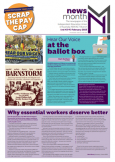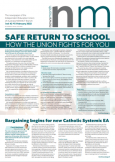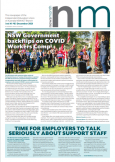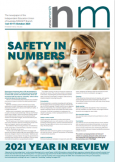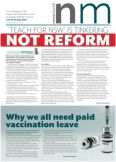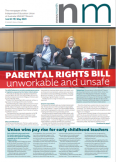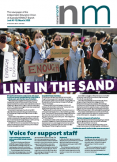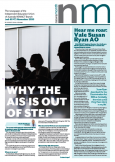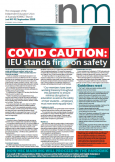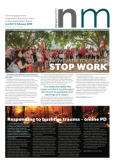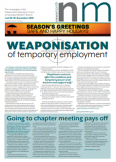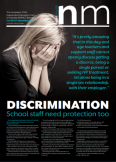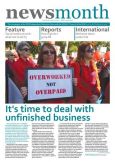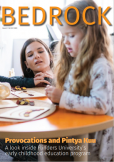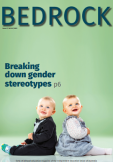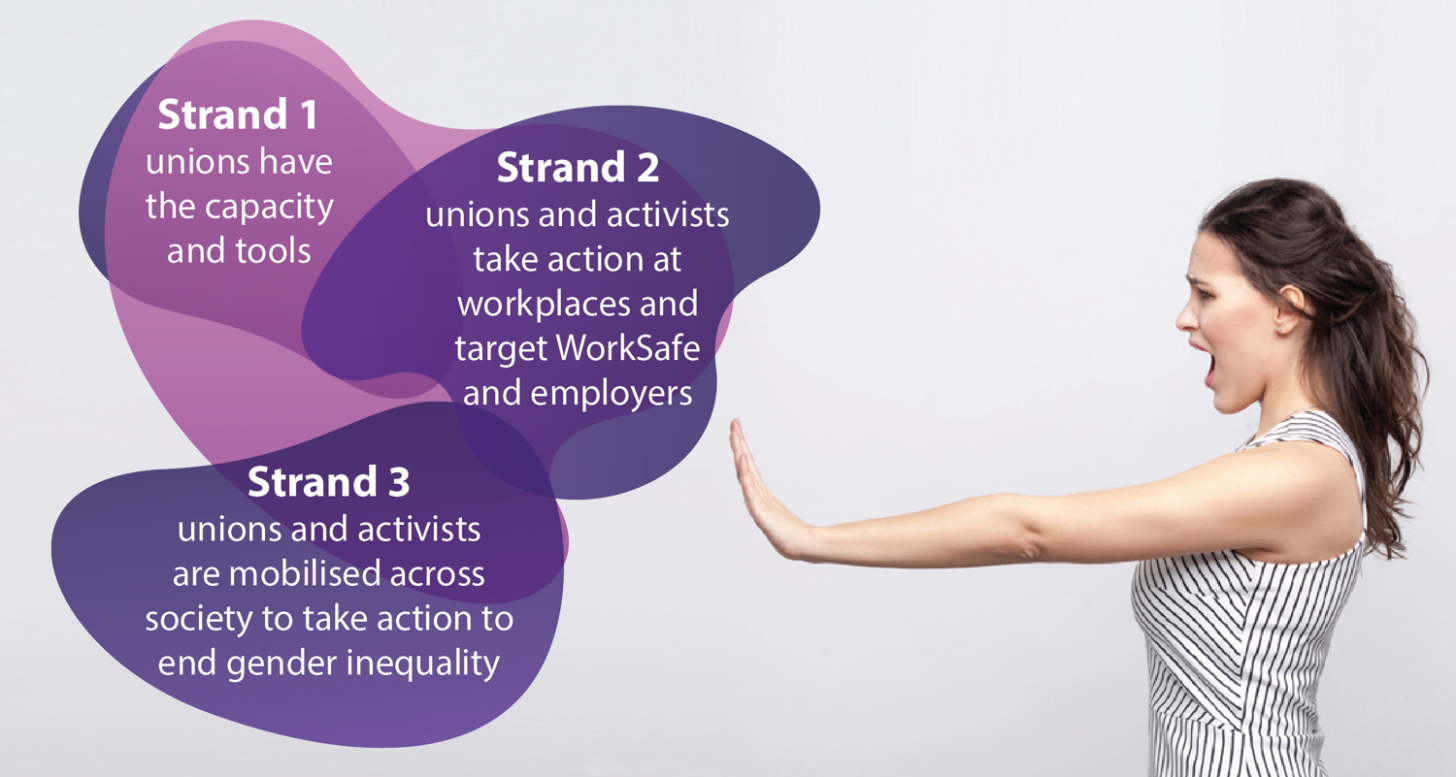Gendered violence: a key priority for union action
There is an epidemic of violent behaviours and attitudes towards women in Australia. Taking whatever action necessary to unpack these attitudes within the workplace is a key priority for VTHC and We Are Union Women, who have started rolling out a training program for unionists to understand their role in addressing violence against women.
The program looks at the structures that create risks to women workers’ health and safety through gendered violence.
What is gendered violence?
Gendered violence is any behaviour, action, system or structure that causes physical, sexual, psychological or economic harm to a worker, because of their sex, gender, sexual orientation or because they do not adhere to dominant gender stereotypes or socially prescribed gender roles.
Women workers subjected to gendered violence report they have experienced:
- offensive language and imagery
- put downs
- sexual innuendos or insinuations
- sexual suggestions or unwanted advances
- stalking
- intimidation
- threats
- verbal abuse
- ostracism
- rude gestures
- sexual assault, or
- rape.
Have you ever been subjected to a behaviour you thought happened to you because of your gender?
Perhaps that action or behaviour caused you to feel any of the following:
- embarrassed, wanting to withdraw or losing confidence
- unsafe or uncomfortable or isolated and excluded
- physically injured or ill, including mental illness, undue stress, anxiety, fear or post-traumatic stress disorder
- economic hardship for a range of reasons, including sexist attitudes, leading to a lack of career progression, unfair classifications, being kept part-time or casual, or leaving a workplace to be free of gendered violence
- relationship breakdown and family disruption.
Many women workers can relate to at least one of these feelings. Have you ever been subjected to gendered violence that does not fall into the list above?
Gendered violence may also be circumstantial. Sometimes it is difficult to articulate and may depend on workplace culture. Many women workers know what this feels like, and it makes it difficult to make a complaint or take action.
Gendered violence and the union’s approach to OHS risk
The union movement says that rather than focusing on the individual, gendered violence is experienced by the collective.
As it affects such a large cohort of workers, gendered violence is a system of attitudes that creates risks for particular workers. It is an unsafe system of work and is an occupational health and safety (OHS) risk.
Unions already have the tools to address OHS issues. OHS laws differ from state to state, but generally require employers to provide a safe workplace, free from hazards.
Hazards are sometimes easier to identify, such as working from dangerous heights, tripping hazards, being exposed to dangerous chemicals, or a risk of being harmed by equipment. Traditionally, this has been the focus of unions but, increasingly, unions are also working to address OHS risks that relate to mental injury, such as stress, bullying and anxiety.
Gendered violence presents both a physical and psychological risk for women workers. The risk can be removed by requiring employers to create a safe work environment. This approach forms the basis of the union movement’s campaign to stop gendered violence at work.
Causes of gendered violence
It’s important to understand the cause of gendered violence so we can take action to stop it.
If you answered yes to the above question about being subjected to gendered violence, think now about why this happened. What caused it to happen? Do you think how you felt afterwards was related to the cause?
Participants of the training sometimes say that gendered violence relates to perceived external factors – sometimes they say alcohol is involved, sometimes they bring up that their employer is particularly unhelpful, or that they don’t have anyone to go to who can help them.
Factors that underpin the incidence of gendered violence in the workplace include:
- Women are more likely than men to be in more vulnerable positions in the labour market. This is particularly the case for women in feminised industries and women in lower paid and/or precarious work.
- Women typically have lower social and economic power.
Spotlight on systems and culture
Cultures of sexism and gender inequality (inside and outside of work) reinforce norms and behaviours that accept and trivialise the violence that women experience.
It’s important to remember that gendered violence is an unsafe work system. The cause is gender inequality, and how unequal attitudes towards women manifest in workplace practices.
On the one hand, we could say that for teachers, gendered violence is different to the kinds of sexism experienced by, for example, hospitality or retail workers. It may instead be found in the culture of the school or the work systems in place.
On the other hand, it’s not that dissimilar. Women teachers interact with parents, students, children and the community regularly. By teaching, they are often engaging with society’s views more broadly and may be challenging them in the classroom. This is a difficult task and is one form of gendered violence. Teachers deserve to feel supported and safe in this process.
We know that the cause of gendered violence is about normative attitudes towards gender. It’s not just women, but workers who do not conform to society’s gender stereotypes including those who identify as gay, lesbian, intersex, transgender or queer, or those who do not conform to prevalent gender roles, who report having been subjected to gendered violence.
Women who experience multiple forms of discrimination and inequality are particularly vulnerable to gendered violence in the workplace. Aboriginal and Torres Strait Islander women, culturally and linguistically diverse (CALD) women, refugee and migrant women and women with disabilities are at greater risk and often experience higher levels of gendered violence at work.
How do we stop gender inequality, sexism and gender violence at work?
What would it take to stop gendered violence in your workplace? This may be a difficult question because gender inequality can work its way into all our systems of work, from a school’s culture or leadership team to interactions with students or micro aggressions from colleagues.
The IEU wants to work with you to find the appropriate solution. Participants of the training have taken a number of actions to make their workplaces safer for women workers. Whatever you decide to do, if gendered violence affects you and your workplace, you can be sure it affects your colleagues. You have strength through collective power, and if women unionists stand together, we can end gendered violence. Contact your IEU organiser for advice and support on how to stop gendered violence at your workplace.
Raise awareness of gendered violence: you could put up posters or flyers in the lunchroom, or organise a conversation with women colleagues or colleagues who do not conform to dominant gender stereotypes. We Are Union Women have a facilitated conversation pack you can use called WRAW Chats (Women’s Rights at Work).
Call it out, bystander action: when you witness gendered violence, name it for what it is. Help a colleague and let them know they’re not alone. In some schools, this may be difficult, and you may want to act to ensure your school is accepting of bystander action. The IEU can help you with this.
Include the model gendered violence clause in your next enterprise bargaining agreement: this clause obliges employers to provide a safe workplace and to unpack any behaviours that may constitute gendered violence. There are also appropriate recourse measures.
Affirmative action: your school may need to take deliberate steps to overcome historical gender inequalities. Reserving particular leadership positions for women or people who belong to particular social groups is one of the ways to do this.
Gendered violence audit: you could present an audit of the experiences of the women workers in your school. This will pinpoint where the gendered violence is the worst and illustrate what needs to change.













